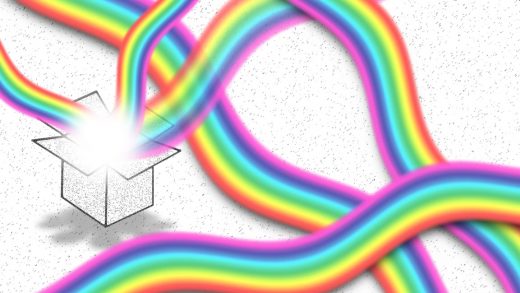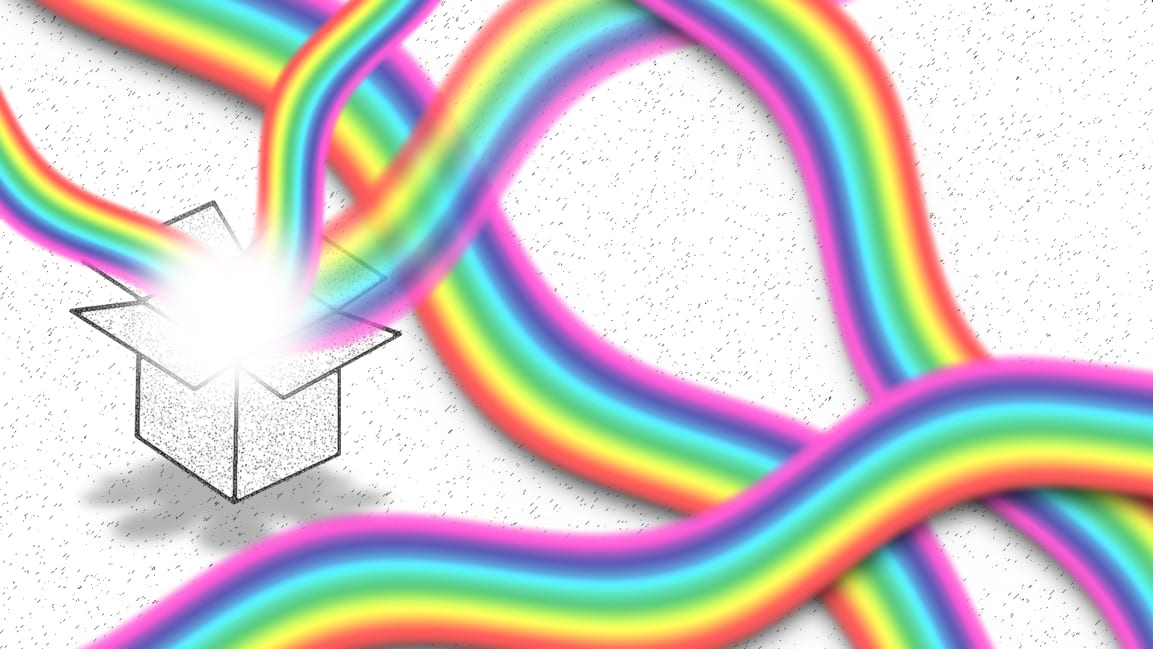The pandemic destroyed my creativity. This is how I got it back
As a writer and entrepreneur, I’ve always loved coming up with ideas. It’s always been second nature to me. My old coworkers used to joke about my machine-like ability to generate list upon list of ideas for new content, outreach strategies, and more, and it was the easiest and best part of my job. That is, until the day last October I found myself brainstorming ideas for a new project, and after what felt like hours of sitting in front of a blank document, the only thing I had written was the following sentence:
“I am not okay.”
It was a wake-up call for me. What had previously been my ultimate strength felt like it was completely gone, and I knew at that moment that I hadn’t just hit the proverbial “pandemic wall,” it hit me—with the force of a runaway freight train.
In the early days of the pandemic, I felt lucky. I’d been working remotely for five years, which meant I didn’t need to worry about transitioning to a brand-new work environment like so many others. I had a job I loved, a boss who was flexible and understanding, and—aside from the struggle of adjusting to my partner’s presence in our cramped home office—everything should’ve been easy.
But the opposite turned out to be true. Instead of blazing through my work days as if nothing had changed, everything flipped upside down. I could barely focus, my motivation dwindled, and I was stuck in a chronic state of burnout. Even after I launched my own content marketing agency with a roster full of clients, I didn’t feel hopeful. I just felt dread.
In hindsight, it’s easy to see how I was affected by the incredible stress of watching U.S. COVID-19 rates climb higher, and the constant unanswered question of when (or if) the world would go back to normal. But at the time, I felt like I had no reason to be stressed, overwhelmed, or struggling with things like motivation, creativity, and productivity.
I found myself floundering, despite doing everything I could think of to stay productive and creative. The longer it stretched on, the harder it was for me to keep my head above water. Eventually, I lost my biggest client when they moved the work in-house, and even though I was the one who turned down the role, I found myself unable to cope. I had no ideas, no motivation, and no prospects, and I was so depressed that I seriously considered closing my business and giving up on . . . everything.
It wasn’t until July 2021 that I realized I had to make a choice. I couldn’t continue down the path I was on, and I was tired of being tired. So instead of forcing myself into something new—after all, I knew my problems would just follow me into a new job, a new city, or a new lifestyle—I decided to strip things down to the very basics, and remove any “shoulds” from the process.
I started by establishing a simple routine that involved scheduling time for creativity. Tuesdays were dedicated to recording new episodes of my podcast, a process that previously felt like pulling teeth, and I set aside a few hours every week to work on my writing process—something I’d abandoned a few months into the pandemic. Once a week, I encouraged myself to connect with my creative side in small, low-effort ways, like sketching on my iPad.
I had felt enormous pressure to do things like script my weekly podcast episode, write regular blog posts, and design new social media graphics. I realized it was this pressure that had caused me to start avoiding these tasks altogether. The weight of my own expectations had slowed my progress to a complete halt, so I threw out any expectations that weren’t absolutely necessary. Scripted episodes of my podcast were replaced with off-the-cuff conversations, saving me hours of production time and mental stress each week. I stopped expecting myself to work a certain number of hours each day and used Notion to create a weekly task list that kept me making progress without needing to worry if I only worked 30 minutes one day and nine hours the next.
I started viewing things like creativity and productivity as water: I couldn’t control the ocean, but I could learn to predict and ride the waves. While that meant some things fell to the wayside (like my business’ Instagram), it also meant unexpected things flourished (like my TikTok hitting 50k followers in 7 months).
From there, I started addressing my needs outside of work. I realized that I was struggling with fear and overwhelm, so instead of ignoring those emotions, I started addressing them. I developed a low-pressure journaling practice and started writing about my emotions, my stressors, as well as any other issues that popped up at work or at home. I started meditating to learn how to be present, reorganized my daily routine to compensate for fluctuations in my energy levels, and practiced saying “no” to things that drained me. Even a small change like ditching my Apple Watch helped me counter the pressure to always be on. I realized I’d been carrying notifications around my wrist every single day, and every notification came with an intense pressure to respond—to be always accessible. That sense of immediacy was exhausting.
Instead of relying on the rules put forth by others, I became an expert in myself. I learned to listen to my body to recognize—and respond—to my physical and emotional needs, which in turn paid dividends. This meant I could tell the difference between the kind of fatigue that needs an extra cup of coffee and the fatigue that needs to call it a day. It took practice, but eventually, I could even tell when my creativity needed a break, an outsider’s perspective, or simply to push through a mental block.
One Monday morning, I sat down at my desk and could tell within the first hour of work that things weren’t happening. Instead of berating myself for it like I would’ve in the past, I cleared my schedule, closed my laptop, and spent the day resting. By the next day, I woke up feeling so refreshed that I flew through two days of work with less effort than if I had pushed myself to stick with it the previous day. And as a result? My mental health improved, my business picked up, and my creativity recovered with way less effort than I thought it would take.
Is it a perfect solution? Of course not. Am I back to my pre-pandemic levels of creativity and productivity? No, but that’s okay. Because, in reality, there is no going back. There is only forward. Change is inevitable—whether it’s by choice or by force—but there’s power in accepting and adapting to it. From there? You decide what works best for you. After all, you’re the expert.
Fast Company , Read Full Story
(46)



